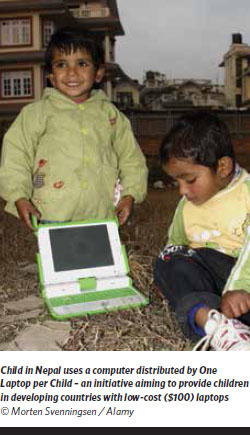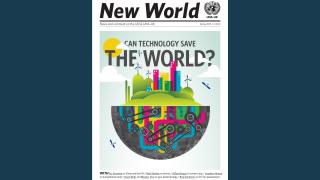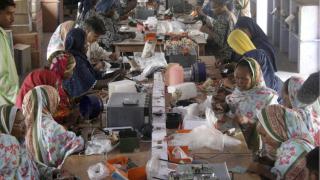
The new century is just about to enter its teenage years but it has already managed to bring forward dramatic changes that have affected most if not all of us. Looking at these changes with an information and communications technology (ICT) lens, we can detect two visible trends.
First is the spectacular growth in the use of mobile technologies and devices on a global scale. Latest estimates indicate that we now have over six billion mobile subscribers, and roughly 80% of them are in developing countries. Historians of technology have indicated that this is the first time in history that a technology has spread so fast to so many people in so many countries. Let us bear in mind, however, that most of these users have access to basic mobile devices; smart phones are diffusing at much slower rates and carry heftier price and access tags.
Second is the emergence of social media and other so-called ‘Web 2.0’ developments, which complement in good fashion the evolution of mobiles. Unlike the old internet of the 1990s, social media platforms empower users to craft their own content and distribute it in real time to billions of people on a global scale and at almost no cost. Recent data suggests that close to one billion people are on Facebook and over 500 million are using Twitter – staggering numbers, although only a fraction of total mobile users.
 That said, mobiles and social media are tightly linked in multiple ways. This was demonstrated powerfully during the beginnings of the Arab Spring, when both were used to mobilise millions of people, ultimately triggering political change. There is, therefore, real potential for new technologies to impact on public space.
That said, mobiles and social media are tightly linked in multiple ways. This was demonstrated powerfully during the beginnings of the Arab Spring, when both were used to mobilise millions of people, ultimately triggering political change. There is, therefore, real potential for new technologies to impact on public space.
ICTs are not alien to the UN Millennium Development Goals (MDGs). On the contrary, they are an integral part of the Millennium Agenda as reflected in MDG 8, Target 18, which calls for access to ICTs “for all” to be delivered in partnership with the private sector. If we look at the impressive trends in mobile access data, we can surely argue that we are well on the way to achieving this target by 2015. If this is the case, what role should ICTs play in the post-2015 development agenda?
Firstly, Target 18 is focused on access to ICTs. While this is a laudable goal, access in itself does not guarantee progress in other areas. Access to a mobile device does not automatically improve health and education or get you a job. But it could help you to achieve those aims. ICTs are enablers of human development. While access to ICTs was and remains an important global development target, new initiatives must look at their role as a means to an end and not a goal in themselves.
The real development value of the ICTs stems from their transformational potential. ICTs can provide new and innovative solutions to traditional development challenges and priorities, not only by increasing the efficiency and efficacy of processes and outputs but also by radically changing the ways in which development assistance is provided.
Social innovators and entrepreneurs from developing countries are tackling human development priorities by devising solutions that cater to the needs and demands of local communities. Bottom-up innovation is taking root in many poorer countries, especially in Africa, which seems to be leading the community-based development charge. Mobile and webbased applications have been developed to address a host of issues, including health, education, agriculture and violence against women. Their use is bolstered by the fact that local entrepreneurs enjoy the trust of their communities.
Crowd-sourcing – i.e. gathering userprovided information into one single platform using a simple technology – can also be used for many other purposes, such as monitoring food/staple prices; logging local problems, from crime to potholes; or monitoring human rights abuses. Today, such platforms are used in almost 100 countries.
The same goes for financial and banking services for the poor. M-Pesa, a mobile-phone-based money transfer and microfinancing service, was able in five years to reach close to 20 million Kenyans, most of whom did not have access to traditional banking services. Similar initiatives exist in other countries and the potential for growth is enormous. Brazil’s Bolsa Familia, for instance, which is the world’s largest cash-transfer welfare programme, could greatly benefit from mobile banking.
Employed in innovative ways, old and new ICTs are helping to transform the lives of people around the world. It is crucial that ICTs continue to be a priority for the remaining two years of the MDGs, and that their potential is harnessed by the post-2015 development agenda. The question today is not if ICTs should play a role in development, but rather how we can use these innovations to reach the billions who still have little to no access to basic public and private services.
Raúl Zambrano is the Global Lead/Senior Policy Advisor, ICT for Development and E-governance, UN Development Programme. Visit www.undpegov.org












